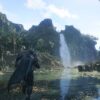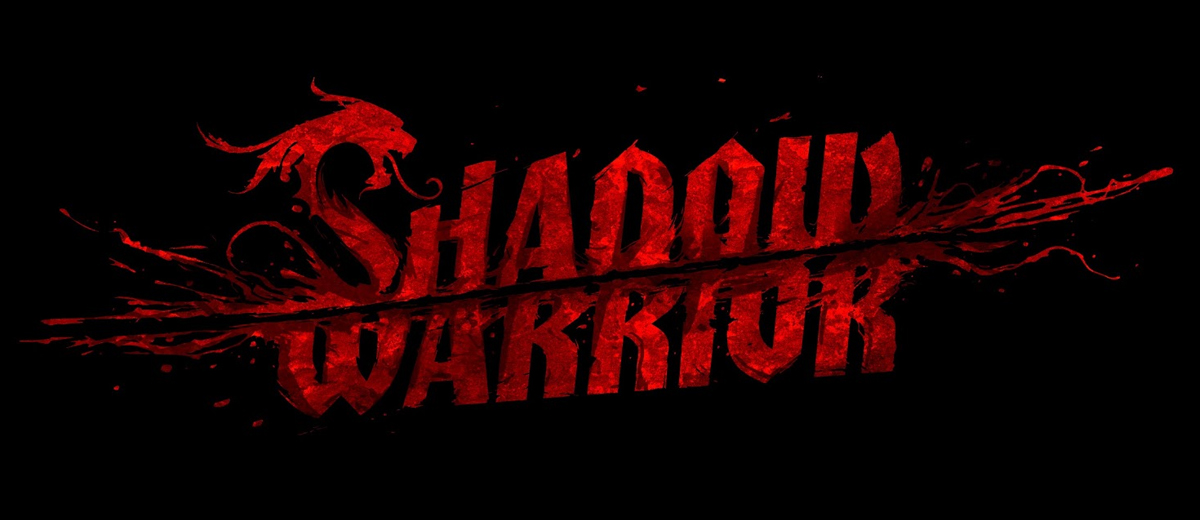
Orochi Zilla, a powerful Japanese industrial magnate, seeks an ancient katana known as the Nobitsura Kage. When it is understood that a collector known as Miyazaki is in possession of the sword, Zilla sends his top assassin to broker a deal for the blade.
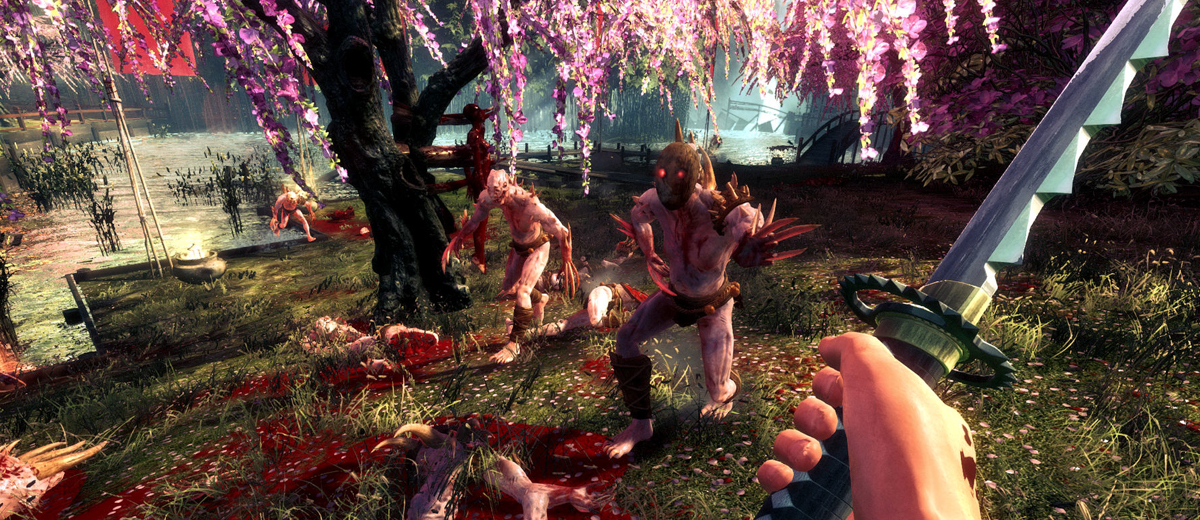
Enter Lo Wang; a wise-cracking ninja mercenary with a flair for style and an attitude that you don’t want to mess with. Tasked by Zilla to purchase the Nobitsura Kage from Miyazaki, Wang is forced to take the sword by force, but is captured and locked up. Not long after, the compound is attacked by demons, killing Miyazaki in the attack and the sword disappearing in the process. Allying himself with the masked demon Hoji, Wang discovers he is in deeper than he thought (no pun intended), fighting off hordes of demons in order to retrieve the Nobitsura Kage and aid Hoji on a quest that affects both this world and the Shadow Realm. With an armoury of different weapons and a big sense of humour, Shadow Warrior captures a side of gaming we haven’t seen in a long time.

As we’ve seen in the past, taking a classic game and revamping it for a new generation doesn’t always work (looking at you, Duke Nukem Forever), but developer Flying Wild Hog and Devolver Digital really pulled out all the stops and made something that is a lot of fun. Based off the original Shadow Warrior created by 3D Realms in 1997, this reboot snuck under the radar and was released on PC in 2013, with the console release following a year later.
Graphically, the game takes on a plastic, glossy sheen, seeming more like a polished last-gen title rather than the standard of the current gen. Sometimes this is detracting from the gameplay itself, but for the most part is easily forgotten when in the heat of action. Visuals are vibrant and bright, and sometimes a bit full-on, but otherwise quite appealing; cherry blossom trees are a vivid pink/purple, fire glows a bright orange, and the splatter of demon blood is a glistening red.
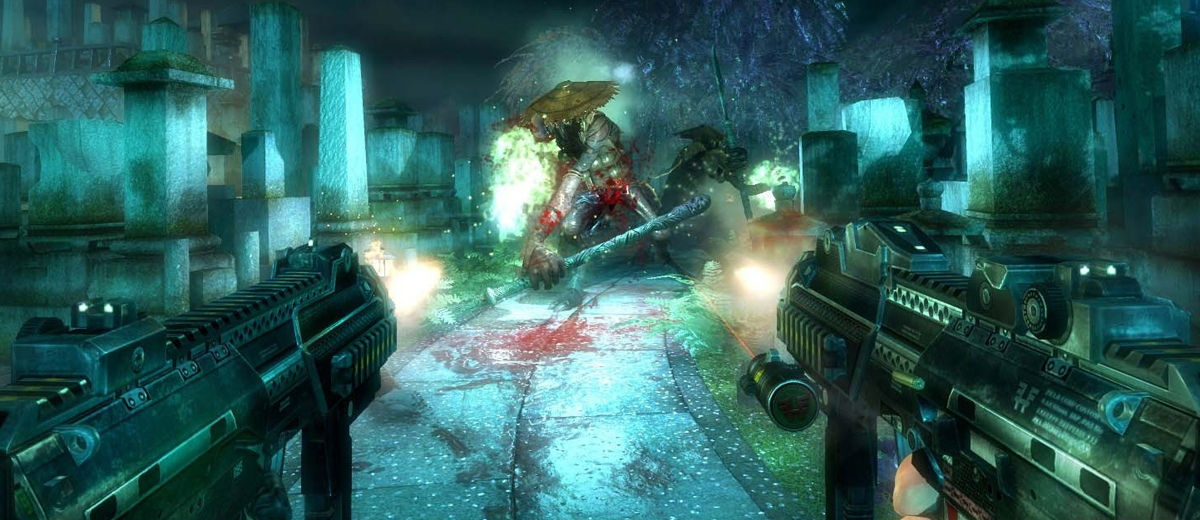
Shadow Warrior knocks it out of the park in terms of soundtrack and audio, opening with Stan Bush’s ‘The Touch’, an iconic 80’s ballad many Transformers fans will recognise. The game’s score consists of a Japanese orchestral arrangement, strengthening the fact that the game itself is set in Japan, and adding pace and excitement throughout scenes of heavy action. Couple this with Lo Wang’s one-liners and the game begins to feel more like a kung-fu action movie, especially with lines such as “Two heads are better than one, especially when it comes to Wang”. The dialogue is well-written and snappy, and each of Lo Wang’s off-the-cuff remarks had me in stitches every time.

Shadow Warrior mixes things up when it comes to the control system; incorporating weapons such as katanas and shuriken into the mix. While attack is still mapped to the right trigger (R2 in this case), the controls begin to get a little confusing from here. The weapon wheel is mapped to L1, and a more powerful attack is mapped to L2. If you’re used to the standard of controls in FPS games, this may throw you off as it took me a while to get used to it. Once you get past the initial awkwardness of the controls, the game gets a lot more fun; each sword slash brings forth the ability to decapitate or remove limbs from enemies, and the firepower allows you to mow down hordes of demons in a gruesome spray of blood. Weapons such as Demon’s Heads and Demon’s Hearts also switch up the gameplay, giving you new and stronger ways to defeat more enemies. Depending on your style of attack, at the end of each battle you are awarded stars depending on your performance; the higher the stars out of five, the more Karma Points you receive.
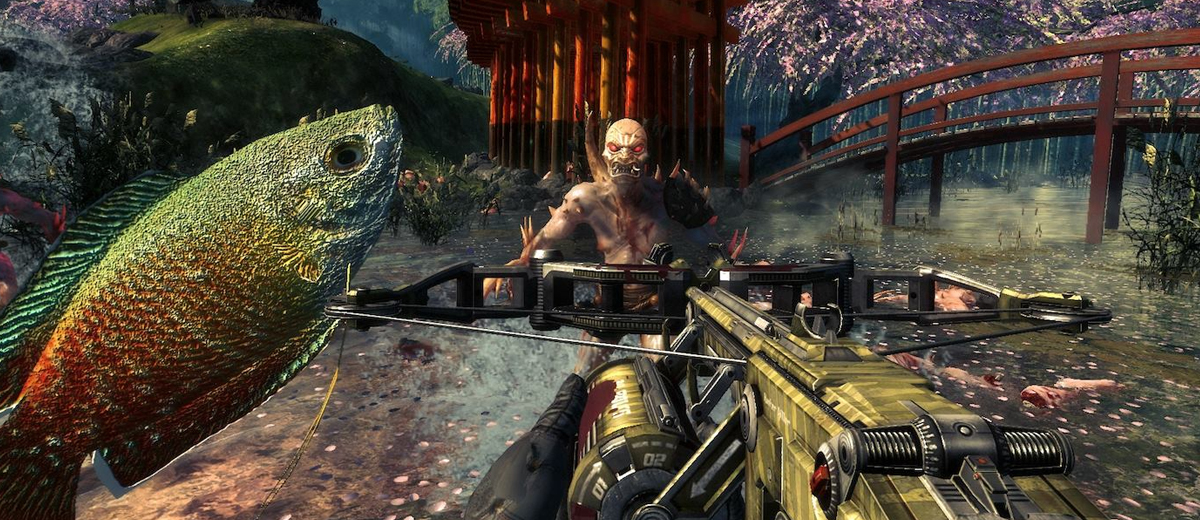
The only downside of this is that sometimes the weapons feel floaty and weak – whole clips can be emptied into a couple of demons and still not take them down, and multiple slashes with a katana is needed to take down others.
It is almost as if Flying Wild Hog were trying to recreate the classic game with a brand new look and engine; items are hidden in cabinets and cupboards and must be picked up with an action button, and secrets can be found with serious exploration of the level. Doors and gates can be opened with the action button too, and there are many secret areas to trail off to and find great rewards.
Fighting through the action gives you Karma Points which you can spend to upgrade skills for Lo Wang, and finding secret Ki Crystals allows you to upgrade powers and abilities. Money in the game helps upgrade weaponry and purchase more ammunition, and while all three of these things help make the game better, they also sidetrack a lot from the game with slow, clunky menus to scroll through.

